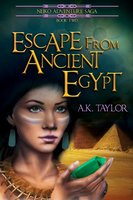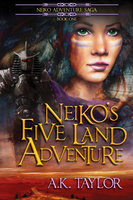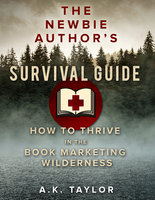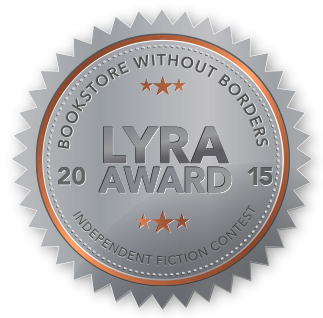|
Rating:
Author: Amanda Taylor
Publisher: Publish Green Published: 2012-10-04 ISBN(s) 978-1-938008-64-1, 978-1-938008-65-8 Editor: Timothy Staveteig Language(s): English Category: Non-Fiction Audience: Adult, Juvenile (8 - 12), Youth (13 to 17) Genre(s): Business, Computer & Technology, Writing Read Excerpt > You Need a Blog Many authors understand that others need a blog--but they don't see the value of such a routine. Or, perhaps you are like me: When I started out I didn’t know what a blog was. It sounded like some nonsense character out of a Dr. Seuss book. You need a blog because the things of the past aren’t working like they used to. Newspapers are disappearing, for example, or at least not writing about books any more. Press releases go to fewer places. Author book tours are no longer (or rarely) done, and many persons are tired of bookstore readings. Old media, when it works, is painstakingly slow, and its reach minimal compared to what the Internet and social media can do. A blog is the helipad of all your websites and social media. You can offer potential readers free samples of your writing. On its pages you can show people where you are in the social media world. Here, you can host book giveaways or participate in blog hops or tours. You can make it your only website or link it to other elements. You can add an array of cool widgets, badges, images, and themes. Still you don't like what you see? Then hire website designers for a custom theme. You add posts (or pages) just like a website, but the content will bring people in, especially if you add to this content on a regular basis (weekly at minimum). To get started on a budget, you can start for free on Blogger.com or Wordpress.com. They are simple and easy to use to start blogging. Consider leasing a URL (uniform resource locator) with your name or book title or theme. Of course, you may have a helpful friend who is an avid blogger and who will offer to develop your site "from the ground up." I wouldn’t recommend this for beginners. First, your friend may build in many things you don't want (or cannot handle) at this early stage. Second, all the unused gadgets may require a monthly fee, which can make your early months complicated and pricy. (And then, you need to thank you friend periodically and report how cool everything is, which can produce in you guilt or resentment.) Once you set up your free blog, play around with it. Discover all of its functions; try back arrow if something seems to go wrong. Or, consult the help menu if you are about to freak out. Or, ask other people in your network if you need other help. What to blog about? If you write nonfiction, then you can focus on your subject. For example, my blog related to this book would focus on helps for new authors. I might invite authors to send me questions, to which I respond in the bulk of the blog post. At the close, I would ask other authors (experienced or new) how they have handled this issue. If you write fiction, then you might focus on your genre, say, suspense or sci-fi or fantasy, and perhaps even a particular aspect, such as how various authors create suspense or what new worlds have been created recently. The goal is to attract readers who read in the genre(s) in which you write. If you write variously on a singular topic, then your blog will move higher in search engine rankings whenever someone searches for your topic. Some authors find the approaches above to be risky. They are just beginning in their genre, or they have done a lot of writing, but less reading of other authors in their area. So they focus on a subject they know more intimately, namely, themselves. Try this. Tell about why you like to write or how you got started or teachers and authors who have meant a great deal in your career. Start somewhere. Sometimes authors will mention that they are "blogging a book," meaning that they are creating 500-750 word posts, more or less from an outline they have created. (Later they will copy these posts, edit them, and publish them in a different format.) A variation of this is to write and post on a theme, gather the posts into a PDF, and then offer this as a free download for persons who subscribe to your site or post the free offer on your Facebook page. Some authors are self-critical; they think they don't have the “blogger voice”--that their blogs are too different from their authorial style. Just hang on a moment. Review some of your posts on Facebook or Twitter. Now, talk casually like you were posting any of these. After all, Twitter and Facebook posts have been nicknamed “micro-blogging” formats, which is true. Some friends can be critical (in the most helpful way). Your blogs are hard to read, they report. Not that you have gone all Goth on them, but ... they're not sure. Review your paragraphs and overall visual look. Be sure to bust up your paragraphs into smaller, digestible pieces. Add pictures you have captured or licensed to use. Apart from the words, your blog posts should look intriguing; visuals should help make your point. Why are we doing this again? To get people interested in your world, your subject or genre, you as a person, and so forth. Okay, to get readers to come frequently to your blog. Big blocks of text with no pictures makes people leave like a dog that has been skunk-sprayed. Or, put on your science smock and measure how well some posts do while others do not. What is the difference? Title, image fun, how the text is arranged? Experiment, make single changes, and see how your customer (the reader) reacts. Make sure you activate you email subscription widget and put it where people can see it. Best is to place in an attractive clump with your Twitter and Facebook buttons. If people subscribe to your blog by email, then you posts go directly into their inbox every time. These are real people who are interested in what you’re blogging about. Want safe and free places to put pictures on your blog? Check out these ten sites from this blog (http://www.creativeramblings.com/10-websites-free-images-blog/). Wordpress has built in tools to help you find pictures as well. There have been a few bloggers that have been hit with copyright infringement suits, so choose from Google very carefully (or at your own risk). There are several other free and low cost sites too. |
The first field survival guide for the new author.
After crash landing into self publishing with nothing but the clothes she had on, author AK Taylor fought for survival with trying to market her books on a small budget. After two years of trial and error, reworking, refining, and reaching out, she has created the first survival guide for book marketing compiled of great tools and resources that can be used by any author during the rough times.
BWB never takes commissions - Authors! Sign Up Now! Only $9.99
More books by |





